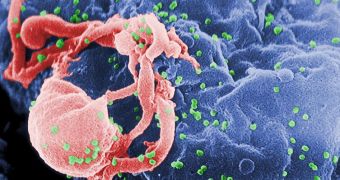After studies first discovered the existence of potent antibodies in the bodies of some people infected with the human immunodeficiency virus (HIV), experts are now gearing up to begin an effort of turning these molecules into a potent vaccine.
Like all other viruses, HIV infects the body, and triggers a response from the immune system. The latter fights invaders through molecules called antibodies, which seek out and attack invading microorganisms relentlessly.
But the immune system is not geared up to fight against HIV, and so it needs to produce all antibodies after infection. The main issue with that is that HIV changes and adapts to its new conditions very fast and unfortunately very often as well.
This is the main reason why so many people who are infected die as a result. Their bodies simply cannot synthesize antibodies fast enough to destroy the virus before it causes fatal damage to the body.
Still, certain HIV-positive individuals develop antibodies that can neutralize a certain variety of HIV subtypes. Now, a group of experts including researchers from the California Institute of Technology (Caltech), in Pasadena, are involved in an investigation meant to determine how this is possible.
Details of the new investigation were published in the July 14 issue of the top journal Science Express.
By using a new cloning approach, the international research team was able to isolate new antibodies from HIV-positive patients whose bodies somehow managed to destroy the invading viral agent.
“"We're very excited to have the opportunity to use structural biology to learn what makes these new antibodies so potent against HIV,” explains the Caltech Delbruck professor of biology, Pamela Bjorkmanand. She is also a coauthor of the new investigation.
“We hope that visualizing how these antibodies interact with HIV proteins will allow the design of even more potent anti-HIV reagents and provide critical information for vaccine design,”she adds.
Like many other HIV antibodies, the new ones attach to the CD4 binding site on the viral cell. This surface is needed in order for the virus to be able to enter cells and infect them.
This study “provides extremely useful reagents that can be used for passive immunization to treat infected individuals,” says Caltech postdoctoral researcher Ron Diskin.
“Second, it demonstrates that a comparable and highly effective anti-HIV immune response was elicited in different individuals, which strongly supports the idea that an effective vaccine will be feasible to develop,” he concludes.

 14 DAY TRIAL //
14 DAY TRIAL //